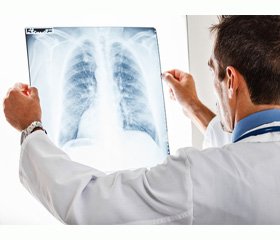Журнал «Здоровье ребенка» 5 (56) 2014
Вернуться к номеру
Of pathogenesis of pediatric asthma
Авторы: Chernyshova O.Ye. - Donetsk National Medical University named after M.Gorky, Ukraine
Рубрики: Педиатрия/Неонатология
Разделы: Справочник специалиста
Версия для печати
In the article described the modern conception of the etiology, pathogenesis, phenotypes of asthma in children.
Asthma remains one of the most pressing health and social problems of modern pediatrics. Over the last decade there is a significant increase in the number of allergic diseases, especially asthma, which is regarded as a world-class problem and is the focus of clinicians from various specialties. According to WHO, about 300 million people worldwide suffer from asthma. It is predicted by 2025 this figure could reach 400 million. Chronicity of the pathological process leading to a deterioration in quality of life, reduce their activity, morbidity and mortality.Multifactorial etiology is different and complex. Numerous genes, their interaction with environmental factors, genetic predisposition, the reaction of the respiratory and immune systems, which determines the severity, viral and bacterial factor allow to distinguish different phenotypes of asthma.
Causes of pathological changes in asthma may be a variety of triggers, such as viral infections, allergens, exercise, tobacco smoke, chemical pollutants on external background effects of genetic factors. The most common are the viral infections. Significant impact on the development of respiratory sensitization have household, epidermal, fungus, pollen inhaled allergens. In addition, allergens can act drugs - antibiotics, especially penicillin, sulfonamides, vitamins, acetylsalicylic acid. In recent years has focused on different respiratory infections causing obstructive symptoms - respiratory syncytial virus, rhinovirus, influenza virus, parainfluenza, Chlamydophila pneumoniae and Mycoplasma pneumoniae infections.The three main components of the modern definition of asthma are chronic inflammation, bronchial obstruction and increased bronchial reactivity. As a result of these pathophysiological changes appear characteristic clinical manifestations of asthma - wheezing, shortness of breath, chest tightness, cough, sputum production.
Pathogenetic mechanisms of asthma includeTh2- allergic eosinophilic inflammation and airway hypersensitivity of bronchi, neuroimmune interactions, hypersecretion of sputum, airway remodeling.
In most cases, asthma is an atopic disease, which based on changes in the immune reactivity with the development of sensitization, allergic (immune) airway inflammation and bronchial hyperreactivity. Imbalance Th1- and Th2-mediated immune responses towards Th2 is a key factor in the formation of predisposition to the development of immediate hypersensitivity reactions. Inhibition of the development of Th1 cells exhibit reduced production of gamma interferon, production increased Th2-cells, increased production of IL-4, IL-13, disturbance ratio Th1/Th2, which is indicative of the switching output to the different classes of immunoglobulins in direction IgE.
The eosinophilic phenotype of asthma characterized by increased expression of specific receptor Fc RI, having high affinity for IgE, epithelial damage, hyperplasia of goblet cells, thickening plate reticular of basal membrane, hypertrophy of smooth muscle. The relative risk of asthma due to eosinophilic inflammation in the population is about 50%. This phenotype of asthma is characterized by a favorable course and a good response to anti-inflammatory therapy with inhaled corticosteroids.
The neutrophilic asthma is characterized by neutrophilic inflammation. Neutrophilic inflammation is is characterized by an aggressive course, severe destruction of tissues, low response to corticosteroid therapy. This phenotype is associated with products of neutrophil elastase, α1-antitrypsin, IL-8, IL-17.
In recent years accumulated data lipid mediators, metabolites of arachidonic acid - leukotrienes. Leukotrienes C4, D4, E4 have potent bronchoconstrictor action 1000 times more potent than histamine. Cysteinyl leukotrienes have main effects such as increased of microvascular permeability, exudation of plasma in the respiratory tract, formation of edema; attract eosinophils in the airways causing bronchial infiltration of endothelial damage and the formation of airways hyperreactivity; increased secretion of mucus; severe bronchial obstruction caused by the contractile effect on airway smooth muscle; remodeling the basal membrane.
Thus, at present the evolution of asthma has been investigated, but the cause of increased morbidity, disability and mortality need to be clarified. Study of the causes of chronic inflammation in the development of asthma in children, would improve the diagnosis of disease, improved therapy, reduce airway remodeling process that will reduce morbidity and mortality.

